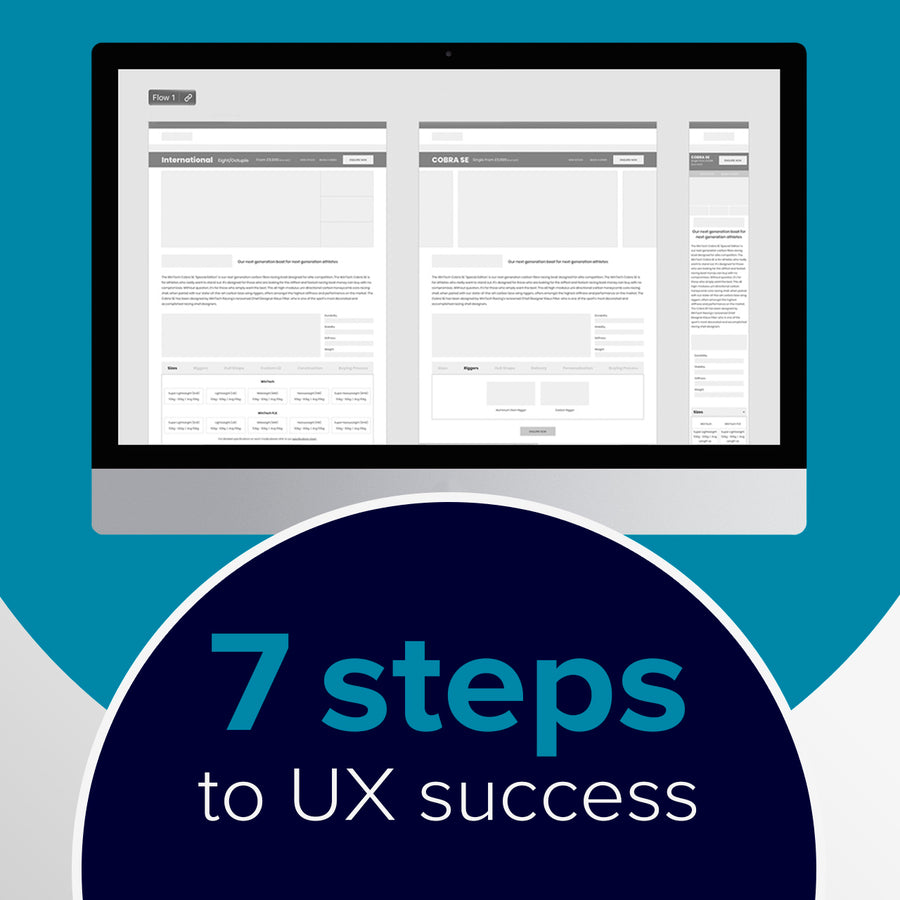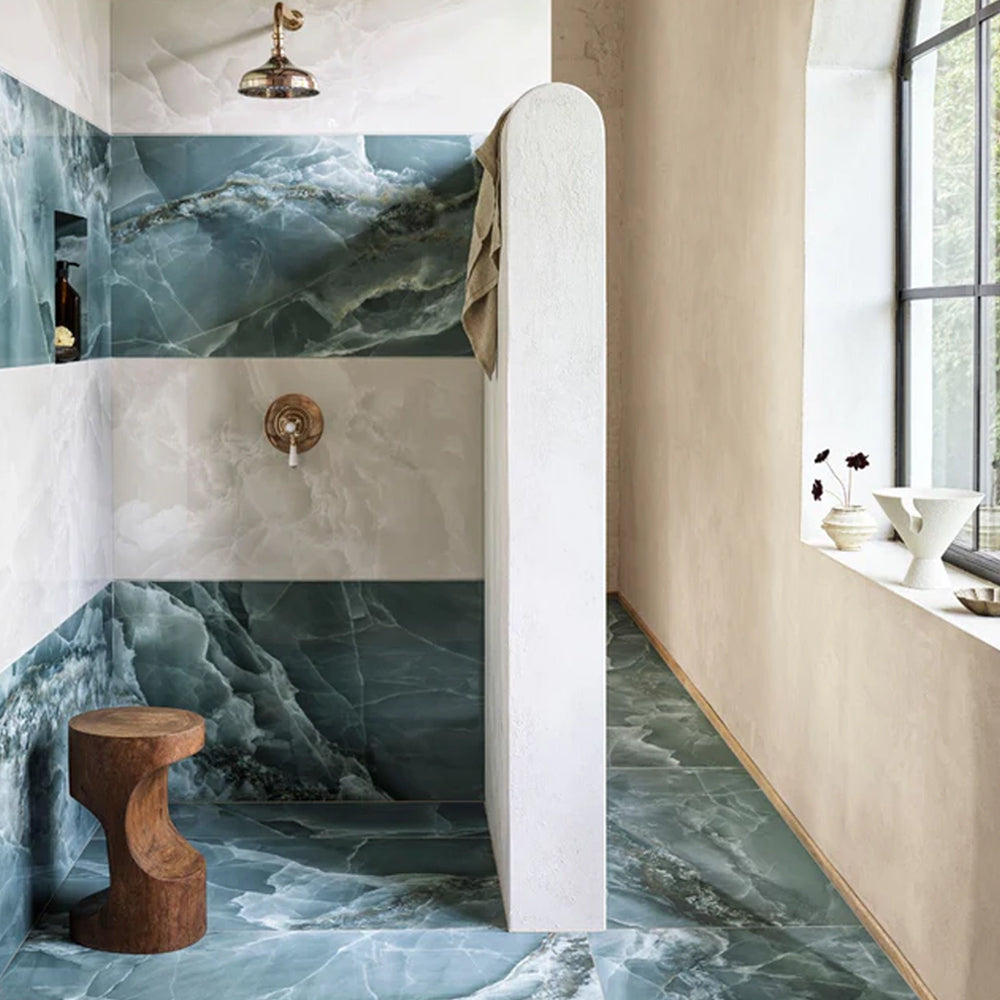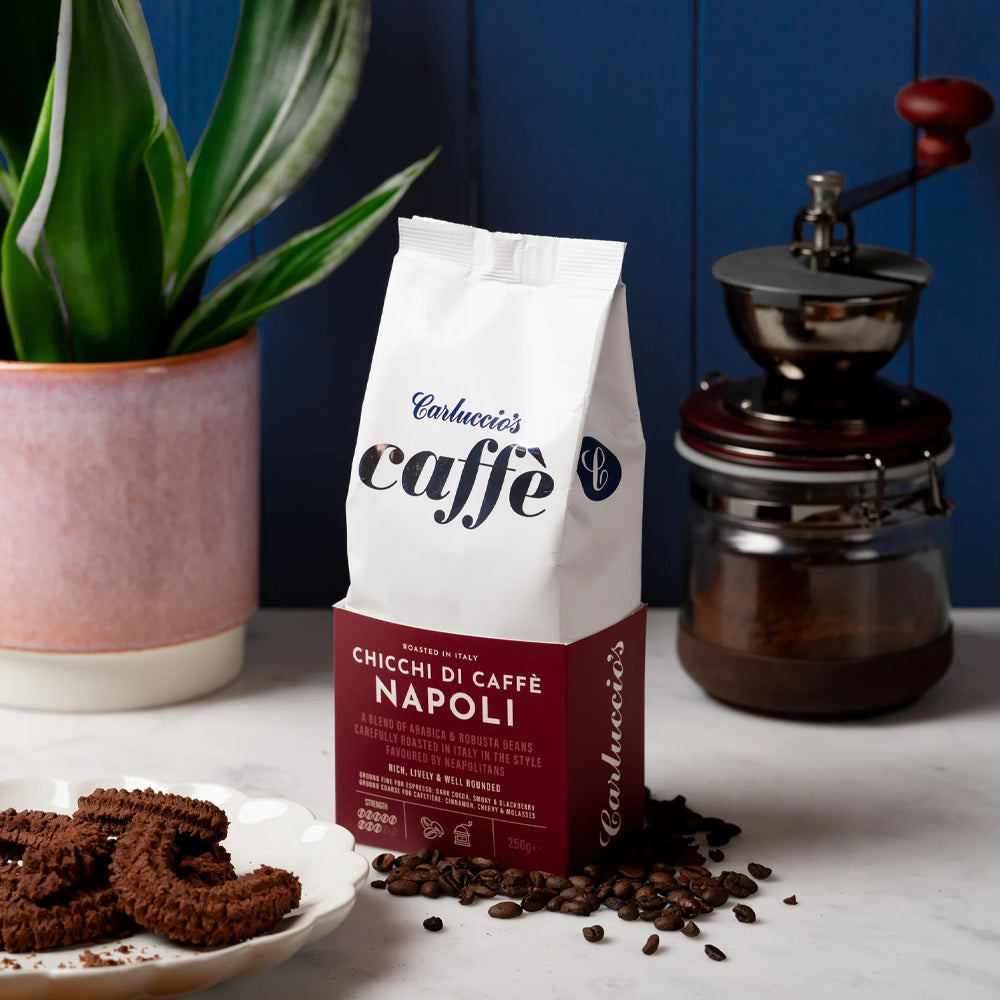Our 7 step UX process
22 June 2023

In today's dynamic digital environment, the significance of user experience (UX) cannot be overstated when it comes to the success of products and services. UX encompasses various disciplines, such as design, psychology, and technology, all aimed at creating meaningful and intuitive interactions between users and digital interfaces.
When updating or redesigning a website, ensuring a well-optimised UX is crucial. A well-crafted UX can have a significant impact on conversion rates by streamlining the user journey, reducing friction, and providing clear calls to action. These elements guide users toward desired actions, such as making a purchase, subscribing to a newsletter, or filling out a form. At Absolute, we have developed our own process to ensure a positive impact on your UX, as demonstrated by our work for McCabes Pharmacy.

Our process follows these 7 steps:
1) Understanding the Challenge:
To grasp the challenge outlined in the brief, we initiate a Stakeholder Interview. This interview involves in-person or virtual discussions with the client to understand the project's goals, objectives, motivations, success metrics, limitations, assumptions, and target audience insights. Thorough stakeholder interviews lay a strong foundation for effective problem-solving and decision-making, ensuring that the project meets or surpasses client expectations. To quote Charles Kettering, "A problem well stated is a problem half solved," and stakeholder interviews play a crucial role in formulating a clear problem statement.
2) Discovery:
The next step in our UX process is the discovery phase, where extensive research is conducted. While we gather insights from the Stakeholder Interview and client brief, it is often challenging to identify the main pain points. Additionally, clients may lack the expertise to recognise underlying issues causing friction. Thus, it becomes our responsibility to conduct comprehensive research to identify and solve these issues. Defining research goals is crucial before commencing the research process. Some exemplary research goals include understanding user behaviours, motivations, pain points, and exploring competitors' strategies. Creating these research goals help us to define what outcome we want from our research and make sure we are successful in getting all the answers we require.
User interviews and competitive research are the two primary methods used in the UX world to collect data. User interviews provide direct insights from potential customers regarding their needs, requirements, and daily lives. Competitor research allows us to analyse what works for your competition, what doesn't, and identify potential gaps that can elevate our clients above their competition. Additionally, Google Analytics, Semrush, Hotjar and Clarity are powerful tools that can provide valuable data on website traffic, user behaviour, and conversion rates, enabling businesses to make data-driven decisions and optimise their online presence. We can also undertake audits on existing sites to get a more technical in-depth analysis of your site.
A good example of which can be seen in this case study for Fired Earth.

3) Analyse:
Once data is collected, the subsequent step involves organising and reviewing it. This entails examining the data to gain a comprehensive understanding of its contents. Sorting and identifying patterns in the data are crucial for uncovering meaningful insights. Affinity Mapping is a common method used to organise and categorise a large amount of information or ideas into meaningful groups. This collaborative approach facilitates pattern recognition, creative problem-solving, and group decision-making.
With the data organised, we proceed to create Personas and User Journey Maps. Personas provide a holistic view of customers, capturing their demographics, behaviours, goals, motivations, needs, pain points, and preferences. For example, for an eCommerce website, you may create a Persona by the name of John Doe, 26, who lives in Manchester. He is browsing the internet for a certain product but is failing to find much information to confirm the product he is after is the correct one for him. He needs the site to be easy to use and informative. In his little spare time he plays sport to try and stay healthy.
User Journey Maps visually represent the steps, interactions, and emotions users experience while engaging with a product, service, or website, illustrating their entire journey from the initial touchpoint to the final goal. If you were to use the same example, John Doe looking for a particular product and information regarding it, you would map out John’s entire journey. You would start with him coming across adverts online, realising that he may need the product, comparing all the options out there, going through websites to find the information and finally choosing and purchasing the product. You would talk about all of John’s feelings, his difficulties, pain points and interactions at each point.
4) Define the problem:
After conducting thorough research and analysis, our next step is to pinpoint the specific problems through the creation of a problem statement. This statement concisely describes the issue or challenge that requires attention, highlighting the disparity between the current state and the desired state. A well-crafted problem statement typically comprises three essential components: the user, their needs, and the insights gained. It serves as a valuable compass for problem-solving and decision-making processes, establishing a clear direction, fostering stakeholder alignment, and ensuring that efforts are focused on critical matters. John Doe’s problem statement would be: John Doe, a young new business owner, needs a new banking application that is easy to use because he is extremely busy and doesn’t have a lot of free time to learn a complex banking application.
5) Ideation:
This stage is where we start generating solutions for the defined problems. An effective tool for this is the "How Might We" (HMW) statement, which reframes challenges into design opportunities. The statement prompts a shift in mindset from problem space to exploration and potential solutions. The "How" aspect instils a belief that a solution exists, encouraging further exploration. "Might" fosters optimism by acknowledging possibilities, and "We" emphasises teamwork and collaboration in tackling challenges collectively. Prioritising the generated HMW statements is essential. The Impact/Effort Matrix helps prioritise ideas by considering their impact and effort required, ensuring focus on tasks that offer the highest value with manageable resources.
6) Visualisation:
After considering all aspects from previous stages, we enter the visualisation phase using Adobe XD. The process begins with creating wireframes, which establish the website's structure and layout, focusing on content placement and functionality rather than visual details. Progressing to high-fidelity interactive designs, XD's powerful tools refine visual elements, typography, colours, and imagery to create a polished and engaging user interface. The inclusion of interactivity, such as clickable buttons, animations, and transitions, simulates the actual user experience. Sharing designs via XD links streamlines collaboration and feedback gathering, allowing clients to conveniently review and provide feedback on interactive prototypes. This efficient process facilitates faster iterations and ensures compatibility across devices.
7) Conclusion:
Upon completing the feedback process and incorporating requested changes, our UX process concludes. Finalised designs, approved by all stakeholders, successfully address user needs, business requirements, and feedback gathered throughout the iterative UX journey. With approved designs, we proceed to the implementation phase, bringing the envisioned user experience to life.
By following this comprehensive UX process, we aim to optimise user experiences, increase conversion rates, and ultimately deliver successful digital products and services. Read more about our UX process and how we can support you in your project here.
Contact Us to discuss how we can help increase sales and boost your online performance!
INSIGHTS
CASE STUDIES

Fired Earth - Shopify Plus
Fired Earth’s move to Shopify Plus marked a major transformation for their B2C and B2B operations, streamlining their product catalogue and delivering a faster, more adaptable eCommerce experience, supporting growth and enhanced customer engagement.
-
Shopify

Carluccio's Coffee Subscription
Discover how we helped Carluccio’s transform their online coffee products, creating a bespoke design, unique user journey and efficient user experience, resulting in an eye-catching subscription service, seamlessly integrated with their Shopify site.
-
Shopify
CONTACT
Are you excited to get your next project up and running? Or are you unsure what is dragging you down?
Contact Us to discuss how we can help increase sales and boost your online performance!

Enter your email address to sign up to our newsletter, featuring case studies, insights, industry news and much more.
If this is something you would like help with, please get in touch.






